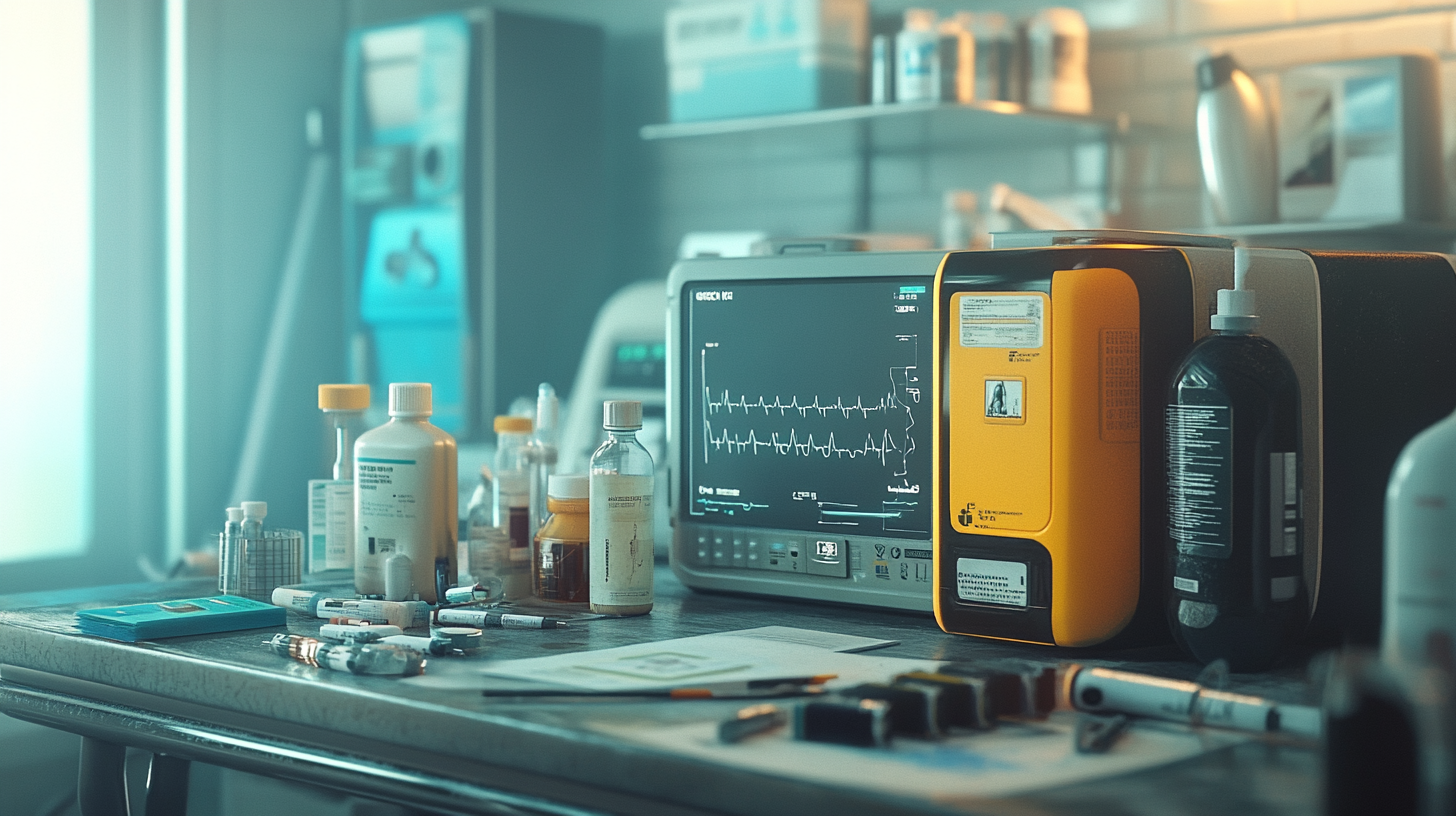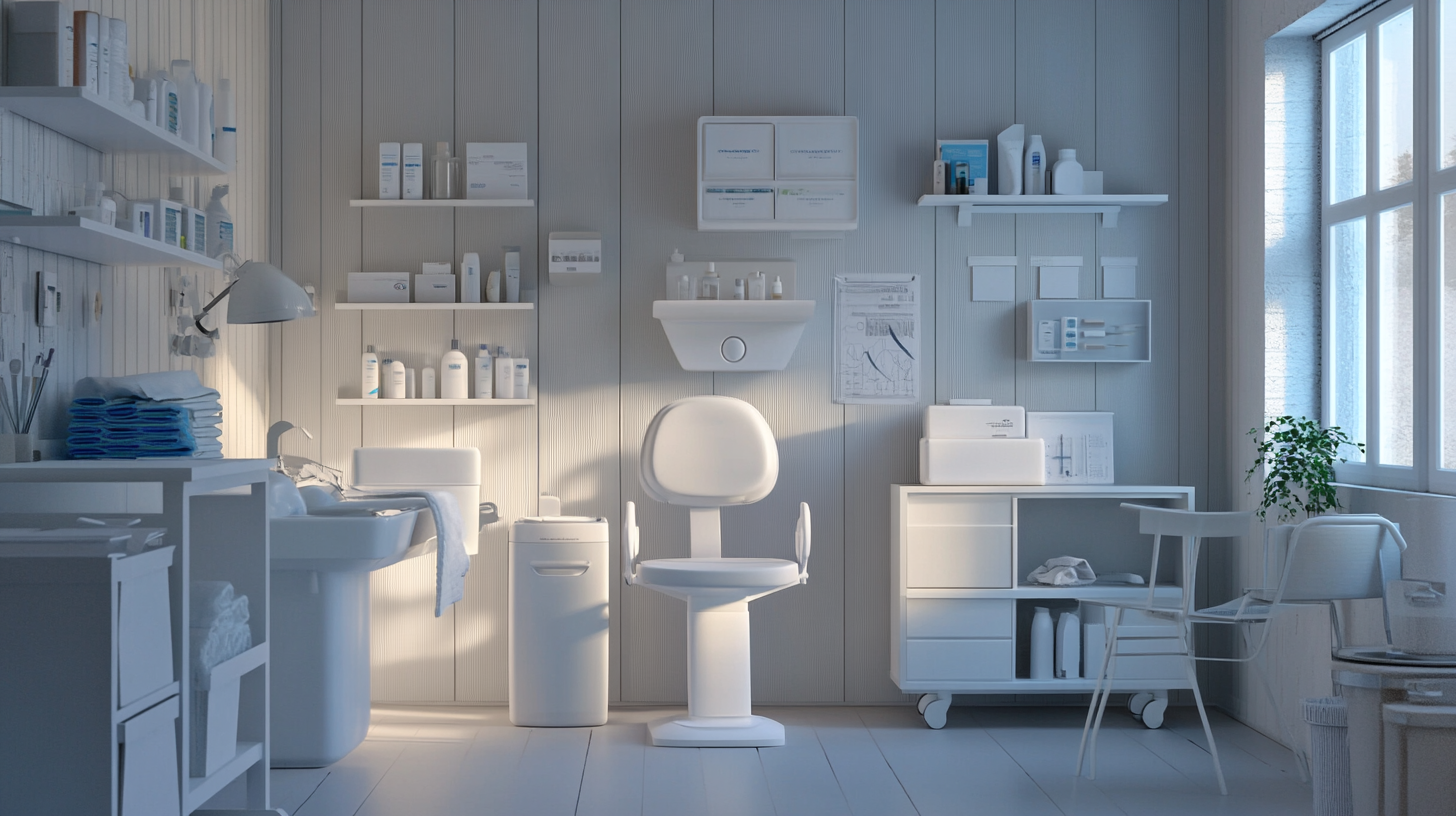Envisioning Tomorrow: The Evolution of At Home Medical Supplies
In recent years, the landscape of healthcare has undergone a significant transformation, with a growing emphasis on patient-centered care and the increasing availability of At Home Medical Supplies. As technology evolves and the demand for personalized care rises, individuals are now presented with more options than ever to manage their health from the comfort of their own homes. This shift not only enhances the quality of care but also empowers patients to take charge of their well-being, fostering a sense of independence and control over their health journeys.
The evolution of At Home Medical Supplies reflects broader trends in the healthcare industry, marked by innovations that prioritize convenience and accessibility. From advanced monitoring devices to essential daily care tools, these supplies are designed to meet the unique needs of each patient, ensuring that effective care is not confined to traditional clinical settings. As we envision tomorrow, it's crucial to explore how these developments are reshaping the patient experience, optimizing recovery processes, and paving the way for a healthier future where home healthcare becomes an integral component of our lives.

The Growing Demand for Home Healthcare Solutions
The landscape of healthcare is rapidly changing, with a notable shift toward home healthcare solutions. This evolution is largely driven by the increasing demand for convenient and accessible medical care. Families are no longer confined to hospital visits; instead, they now seek ways to manage health conditions from the comfort of their homes. This preference is fueled by a growing awareness of chronic diseases and a desire for personalized care, making home medical supplies indispensable. As patients take a more active role in their healthcare, the range of available home medical supplies has expanded significantly. From advanced monitoring devices that track vital signs to easy-to-use mobility aids, these products are tailored to meet individual needs. This increased availability not only enhances patient autonomy but also reduces the burden on healthcare facilities, allowing for a more efficient allocation of resources. Moreover, advancements in technology have revolutionized the way patients interact with home healthcare products. Smart devices equipped with telehealth capabilities enable seamless communication between patients and healthcare providers, ensuring timely interventions when necessary. As this trend continues, we can anticipate a future where home healthcare solutions become not just an option, but the standard for managing health and wellness.

Advancements in Technology Shaping Home Medical Supplies
As we look towards the future, the evolution of at-home medical supplies is fundamentally being shaped by remarkable advancements in technology. Innovations such as drone transportation of medical supplies are not just theoretical; they are becoming a reality. Case studies from countries like the UK and the Netherlands showcase how drones can improve the delivery of essential medical items, significantly benefiting clinicians, patients, and healthcare systems by reducing delivery times and improving access in remote areas.
Another transformative innovation is the integration of artificial intelligence in medical devices. AI-driven diagnostics and monitoring tools are enhancing the accuracy of health assessments, allowing patients to manage their conditions more effectively from the comfort of their homes. This technology not only empowers patients to take charge of their own health but also helps healthcare providers deliver more personalized and timely care.
Moreover, innovations presented at events like CES are pushing the boundaries of personal wellness. From advanced health-screening mirrors to sophisticated sleep tracking devices, these technologies are revolutionizing the way we approach health management at home. As these advancements continue to unfold, the future of at-home medical supplies promises to be more efficient, accessible, and tailored to individual needs, ultimately reshaping the healthcare landscape for generations to come.

Diverse Product Range: Meeting Varied Patient Needs
The landscape of at-home medical supplies has transformed remarkably, catering to a diverse array of patient needs. As healthcare shifts more towards patient-centered models, the availability of a variety of products has become essential. From mobility aids like walkers and wheelchairs to diagnostic tools such as blood pressure monitors and glucometers, the range of supplies is designed to empower individuals to manage their health comfortably in their own homes.
Innovations in technology have also played a crucial role in this evolution. With the rise of smart home devices, patients can now access their medical supplies with greater ease and accuracy. Remote monitoring tools allow healthcare providers to track patients' conditions in real-time, ensuring timely interventions. These advancements not only enhance the effectiveness of treatments but also foster greater independence for patients, enabling them to take charge of their well-being.
Moreover, the customization of products is making waves in the industry, addressing the unique needs of each patient. From personalized medication dispensers to adjustable mobility aids, suppliers are focusing on tailored solutions that enhance usability and comfort. This trend speaks to a broader recognition that every patient's journey is different, and providing them with the right tools in their homes reflects a commitment to holistic care that values individual experiences and challenges.

The Role of Telehealth in Enhancing Home Medical Care
The rise of telehealth has revolutionized the way we approach home medical care, making it more accessible and efficient than ever before. With the advent of high-speed internet and advanced communication technologies, patients can now consult with healthcare professionals from the comfort of their homes. This shift not only reduces the need for in-person visits but also enables timely interventions, ultimately improving patient outcomes. Telehealth platforms allow for routine check-ups, follow-up appointments, and even mental health support, all delivered through video calls or mobile apps.
Moreover, telehealth enhances the management of chronic conditions by facilitating continuous monitoring. Wearable devices and remote patient monitoring tools can transmit vital health data to providers in real-time, enabling proactive care. Patients with diabetes, hypertension, or heart conditions can receive tailored advice based on immediate feedback from their healthcare team. This dynamic approach not only empowers patients to take charge of their health but also fosters a collaborative environment where medical decisions are made more efficiently.
As we envision the future of at-home medical supplies and care, the integration of telehealth into daily healthcare practices will continue to play a pivotal role. By breaking down geographical barriers and minimizing the friction often associated with traditional healthcare, telehealth is set to become a cornerstone of home-based medical support systems. With its ongoing evolution, it holds the promise of making quality healthcare reachable for all, enhancing our ability to manage our health from the convenience of our homes.
Future Trends: Sustainability and Innovation in Home Medical Supply Design
The landscape of home medical supplies is undergoing a significant transformation, driven predominantly by the dual forces of sustainability and innovation. According to a report by Grand View Research, the global home healthcare market is projected to reach USD 515.6 billion by 2027, growing at a CAGR of 7.9%. This surge is largely attributed to the increasing demand for cost-effective healthcare solutions and the burgeoning emphasis on environmentally friendly products. As consumers become more health-conscious and eco-aware, manufacturers are responding with designs that prioritize both functionality and sustainability.
Innovative materials and technologies are at the forefront of this evolution. A 2022 report from McKinsey & Company highlights that more than 60% of healthcare executives are prioritizing investments in sustainable innovations. This has led to the development of biodegradable and recyclable medical supplies, as well as the integration of smart technologies that enhance patient care at home. For instance, wearable devices that track vital signs not only aid in monitoring health but are also being designed using materials that minimize environmental impact, thereby aligning with user preferences for green products.
Furthermore, companies are embracing circular economy principles, focusing on reducing waste throughout the lifecycle of medical supplies. A study by Deloitte indicates that organizations adopting sustainable supply chain practices can reduce operational costs by up to 25%, while simultaneously improving their brand reputation. As home medical supplies evolve, the commitment to sustainability and innovation will not only redefine product offerings but also enhance the overall healthcare experience for patients and caregivers alike.

